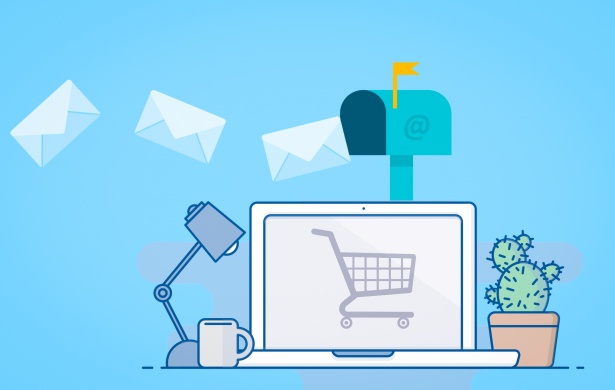Marketing campaigns have evolved together with technology in order to make life easier. With a ratio of 44:1 in terms of the return on investment (ROI), email marketing has been ever popular with marketers. Now the focus has shifted to email automation. Not only does automation provide accessibility but it also brings in the results needed by your business.
Different industries have adopted email marketing automation in order to sustain interest among email subscribers. Online stores, hotel rental services, educational sites, social media, and mobile apps are some of those who have automated emails to market their events, promos, and freebies. It’s no wonder that email automation has grown into popularity.
Email automation allows for multiple opportunities such as list segmentation, personalization of emails, and responsive interface for mobile users. But with so many ways of applying email marketing automation, which strategies are actually proven to provide businesses with the results it needs?
Proven email automation strategies
It’s common knowledge that email automation is an effective way of simplifying how email marketing is performed. The problem is that there are a few challenges in making email automation work to achieve great results.
Let’s look into the different email automation strategies that are proven to be effective. We’ll also discuss how you can improve on using these strategies.
Testing through segmentation
The best way to know if something is effective is by collecting the data yourself. Testing different styles for email campaigns can be organized through segmented testing or A/B testing. What you’ll need to do is to send two different campaigns to two different but similar sets of recipients and see which among the two had the best open rate and conversion rate.
When you’re trying a new style, it’s best to first keep the two test subjects completely different or contrasting in terms of content or design. This way, you can see what generally works for your target audience. Afterward, you’ll need to only make small changes when you’re optimizing your chosen style for email marketing.
The data you’ve collected will always guide you as to which works and doesn’t work, but you’ll need to be more creative when you’re identifying parts that you can improve.
Automate the expected emails
A survey by the BlueHornet has proven that about 74.4% of customers will always expect an email to arrive once they’ve subscribed to your newsletter or when they’ve made their first purchase. Since customers are already expecting these emails, why not automate them? Emails can be automatically sent for each milestone or activity that your customers perform. Some of the most common ones that you’ll need would be:
- Welcoming emails – make them feel welcome the moment they subscribe to your newsletter.
- Birthday greetings – let them know that you remember them during their birthdays.
- Milestone purchases – show them how grateful you are for their continued patronage and support.
- Abandoned cart reminders – remind buyers of their items left in the cart which they haven’t purchased yet.
- Years of subscription – sincerely thank them for the years they’ve been with you on your journey towards growing your business.
Implementing these automated emails can help your brand build a better impression and professional image to customers and subscribers. Moreover, these kinds of emails were found to have up to three times more open rate and click rate, according to Omnisend. Using this strategy could help you transform buyers into repeat buyers for more sales.
Create customer profiles
Web tracking and customer profiling is another way of collecting the necessary data. By tracking the activities of your customers on your website, you could build a profile based on their actual behaviour. As a result, you can now segment lists based on customer profile for a more targeted approach in sending emails.
The data that will guide you in this strategy would be the customer activity and behaviour that you collect. Knowing how your customers browse your website will give you an accurate view of what they’re interested in and what they regularly check.
Turn long emails into series
A series of emails provides 69% more opportunities for sales than having all messages fit into a single message. The progression of sending emails one at a time helps your subscribers focus on what’s important and allow them to understand what’s in store for them.
Email automation helps time these long email campaigns by automating when the next email will be sent. By adjusting your automated workflow to adapt to each subscriber’s case, you can personalize a series of emails just for them. That includes opportunities to promote a new product you’re offering.
Review open rates and ROI
Automation also provides the benefit of viewing email campaign results in an instant. Even if you’re not doing an A/B test, you can still use available data on open rates and ROI from campaigns to see which strategies have been working. This allows you to come up with more interesting strategies and decide on how you want your campaigns to progress based on user feedback and statistics.
Reviewing your statistics also helps you determine areas for improvement and channels that you can utilize together with email automation. You’ll be able to see what strategies are no longer working with different sets of customers. These data made available to you can also be used to open opportunities for omnichannel marketing to expand your use of email automation. With a little bit of practice, you can identify and connect the right channels to your email campaigns in order to attract more customers and drive higher sales.
Use gathered data only as a guide
Whether it’s through surveys and reports or through data you’ve gathered yourself, there will always be a limitation as to how much data can help you. Email marketing strategies made possible by automation can greatly help you with understanding the actual impact of your campaigns, but it does not provide you with the creativity to evolve how you market your business.
Use email automation as a guide and as a means of testing available data instead of a means to define how you create campaigns. In the end, it’s still your creativity and style that will dictate how you come up with highly effective marketing campaigns.















